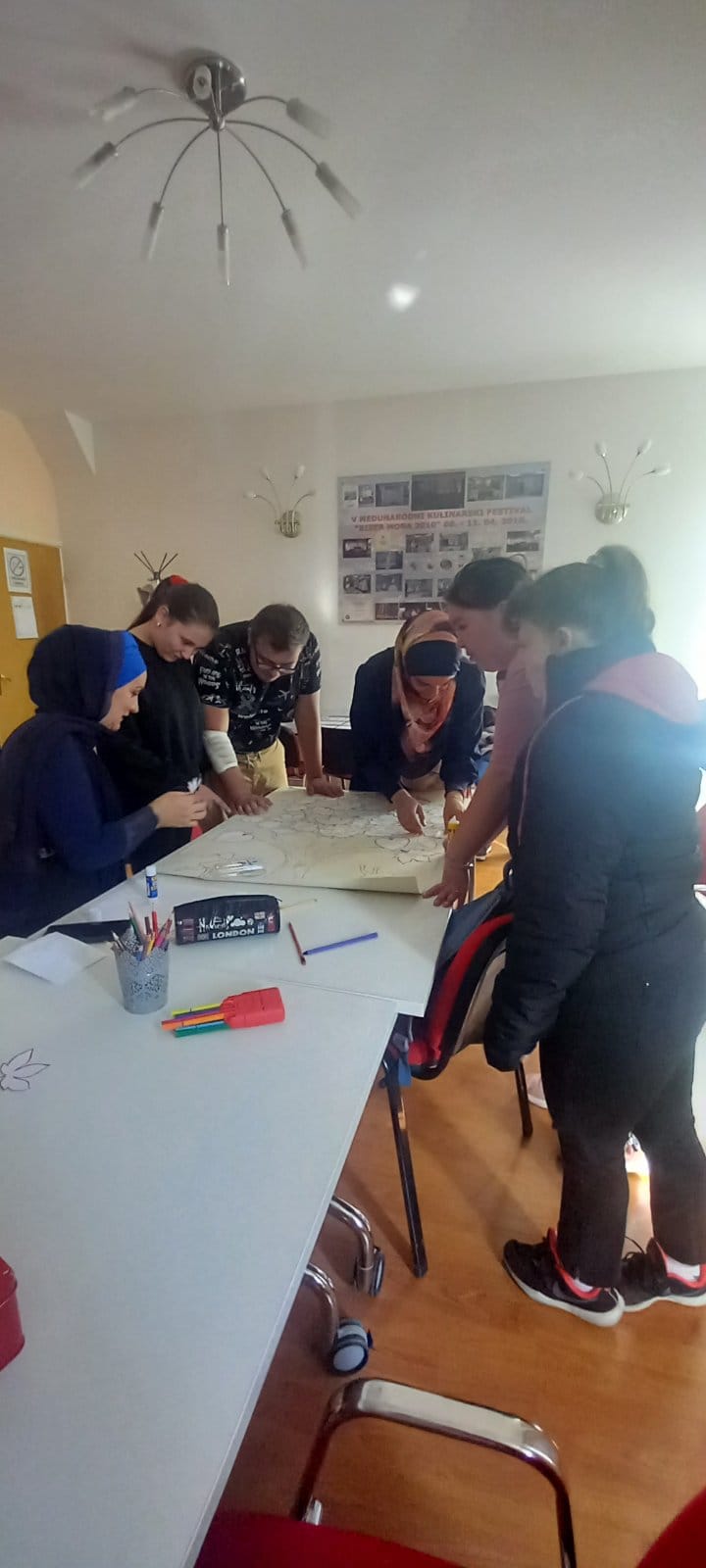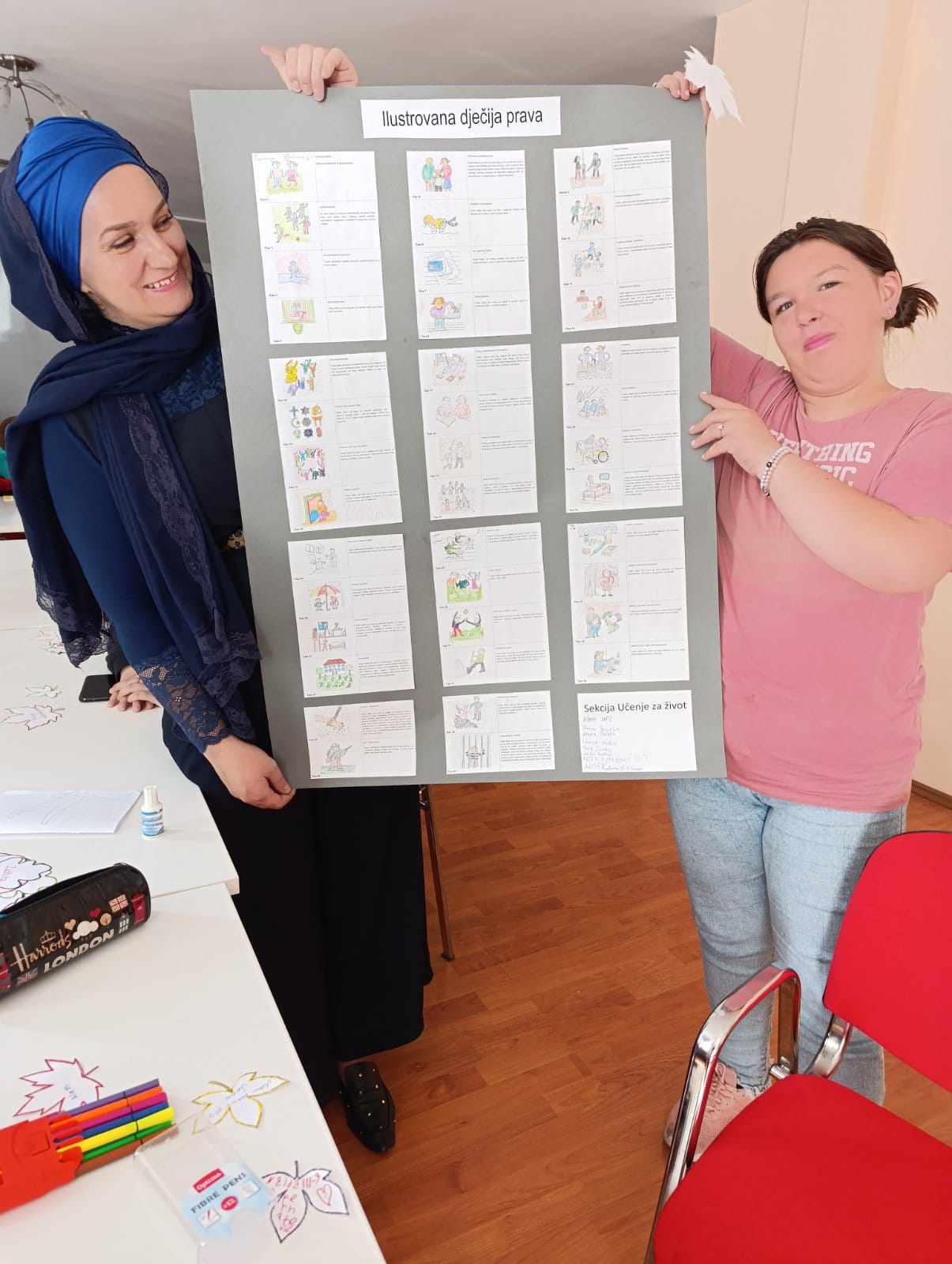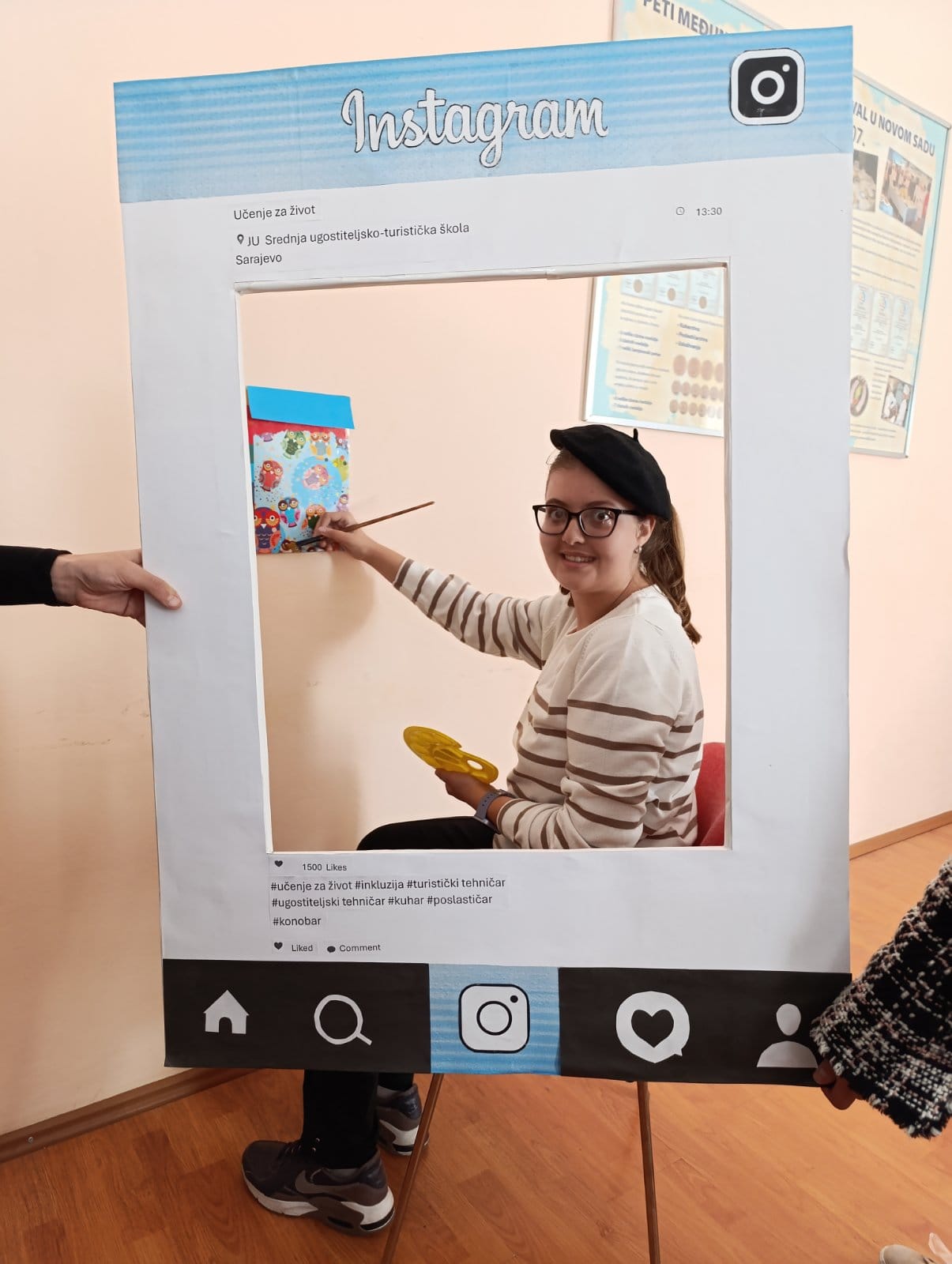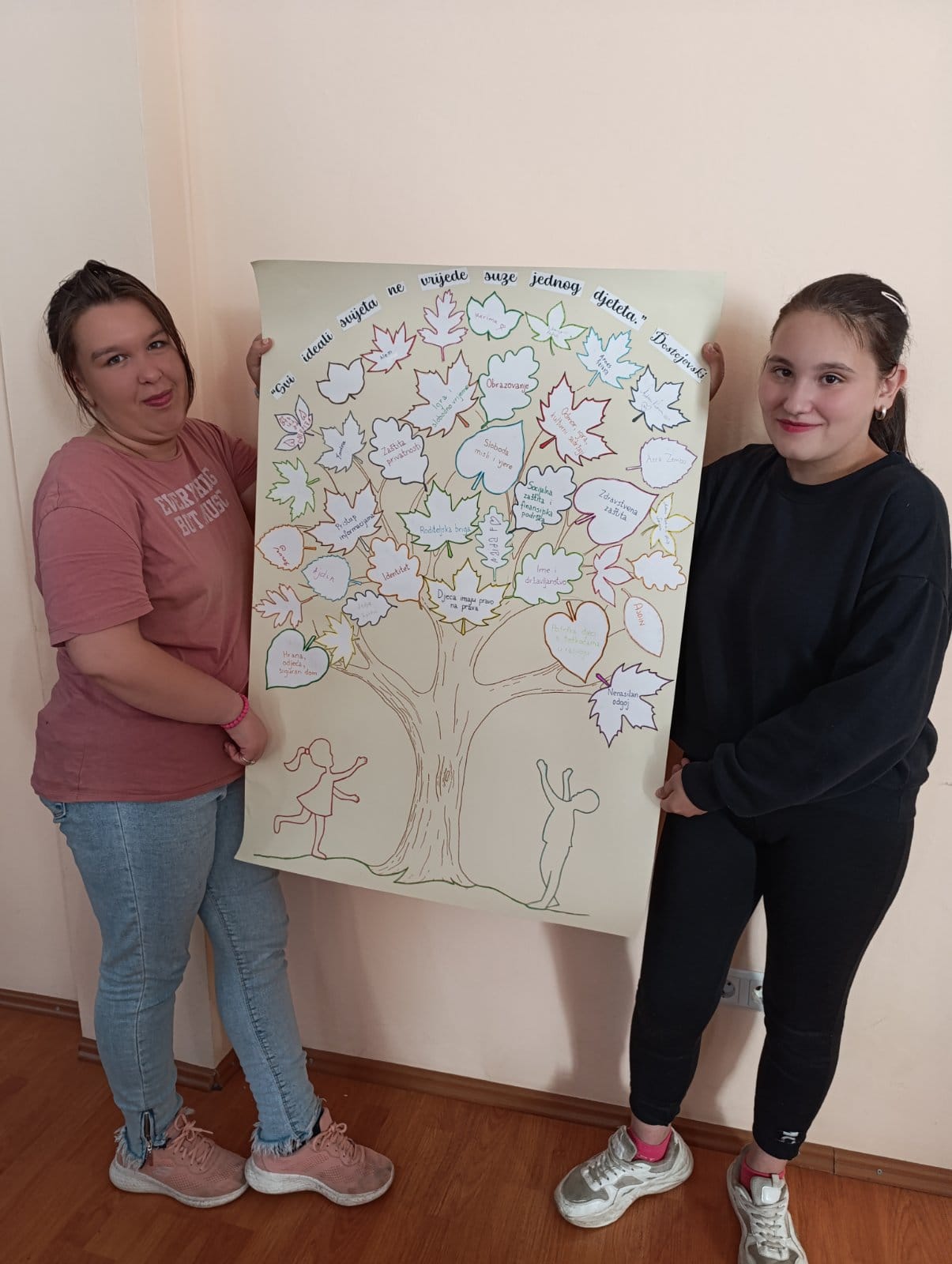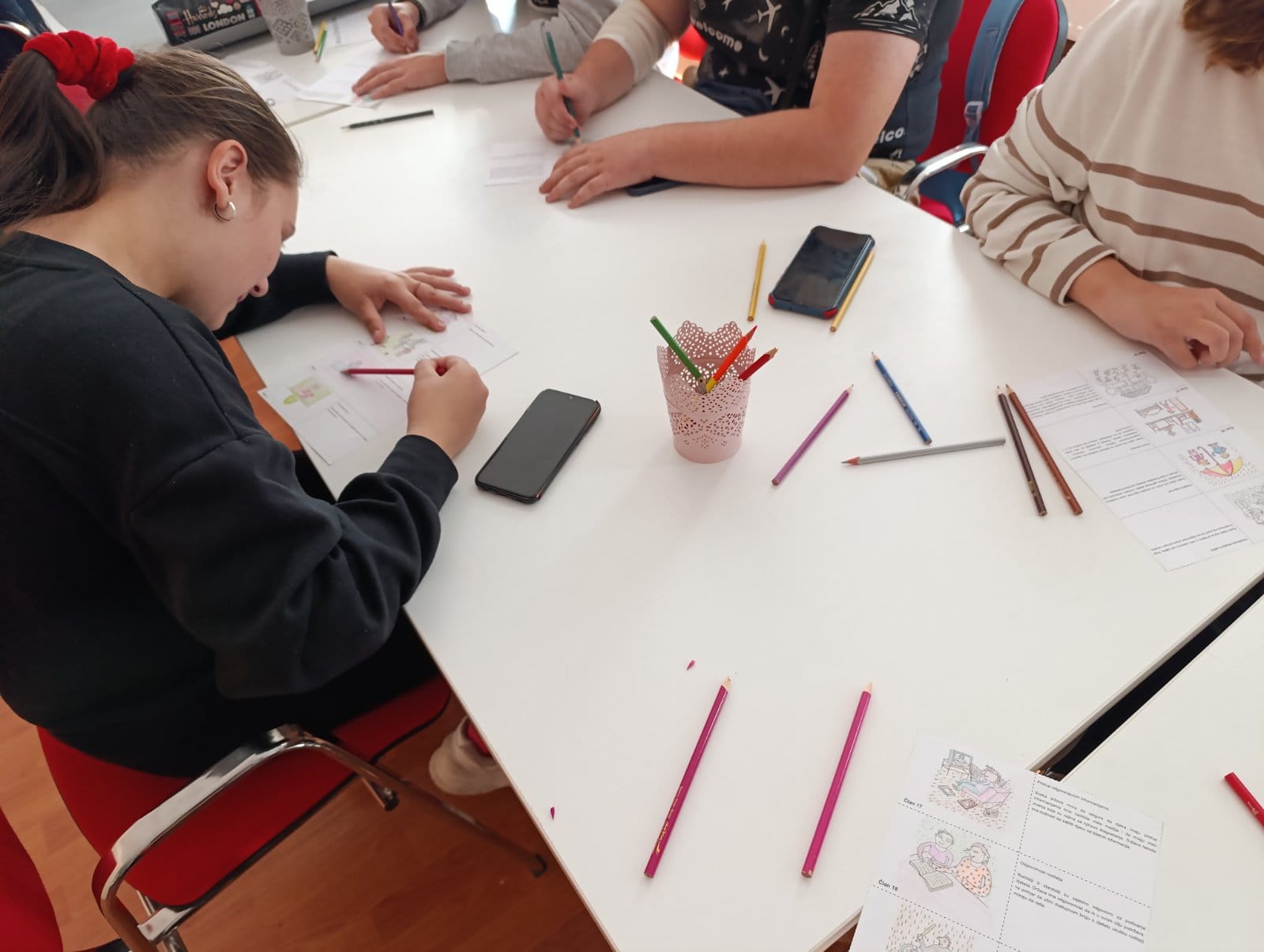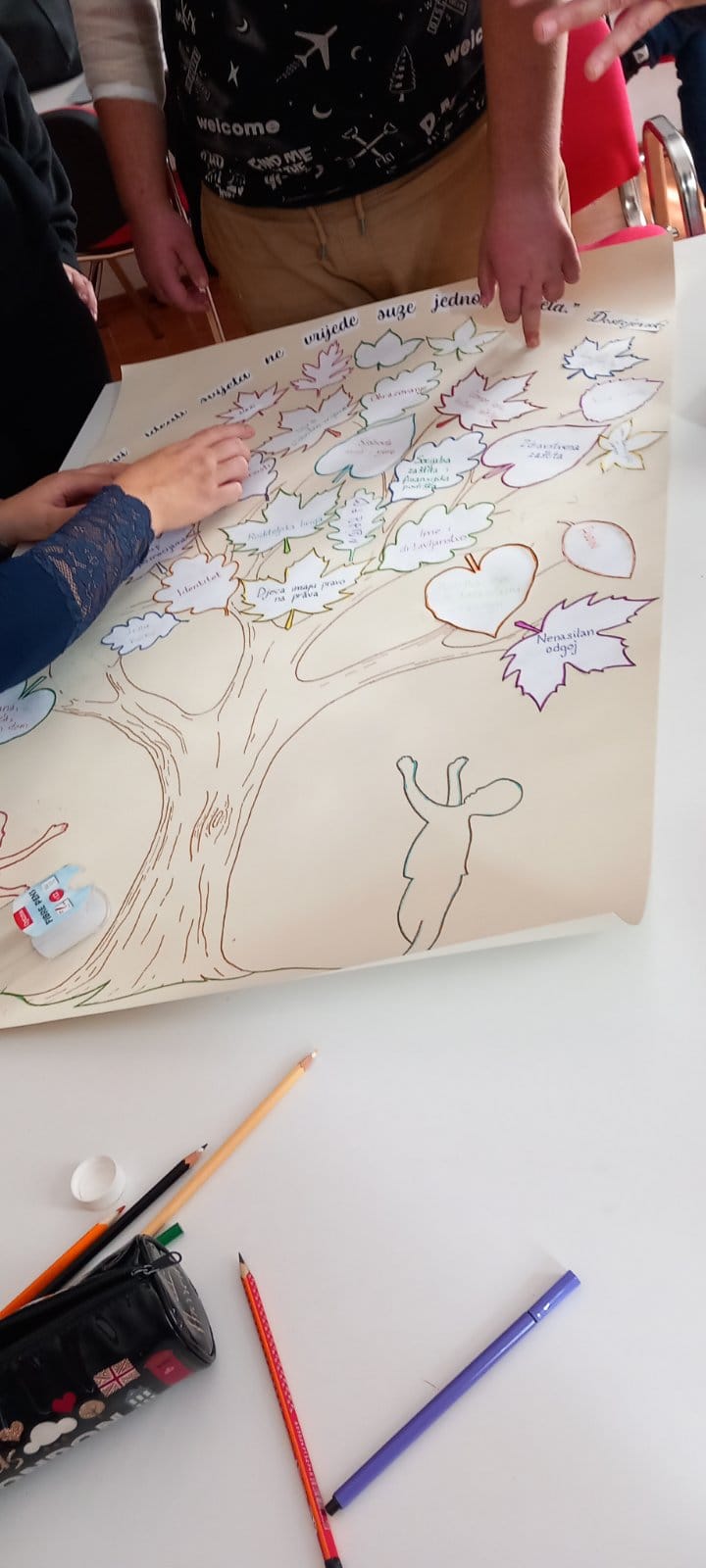The workshop on “Children’s Rights” was designed to help students understand and explore their fundamental rights in an engaging and creative way. Activities included creating a poster and a “Tree of Children’s Rights” with illustrated cards. Students also participated in a role-playing game, embodying various rights such as a doctor for the right to health, a teacher for the right to education, and an athlete for the right to play.
Led by teaching assistants, the workshop encouraged students to learn about their rights through creativity and play, fostering both knowledge and inclusion.

